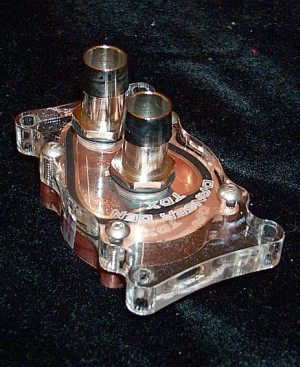Mother Board

Most after-market motherboards produced today are designed for so-called
IBM-compatible computers, which hold over 96% of the
personal computer market today.
[2] Motherboards for IBM-compatible computers are specifically covered in the
PC motherboard article.
The basic purpose of the motherboard, like a backplane, is to provide the electrical and logical connections by which the other components of the system communicate.
A typical desktop computer is built with the microprocessor, main memory, and other essential components on the motherboard. Other components such as external storage, controllers for video display and sound, and peripheral devices are typically attached to the motherboard via edge connectors and cables, although in modern computers it is increasingly common to integrate these "peripherals" into the motherboard.

The Octek Jaguar V motherboard from 1993.
[6] This board has 6
ISA slots but few onboard peripherals, as evidenced by the lack of external connectors.
Additionally, nearly all motherboards include logic and connectors to support commonly-used input devices, such as PS/2 connectors for a mouse and keyboard. Early personal computers such as the Apple II or IBM PC included only this minimal peripheral support on the motherboard. Additional peripherals such as disk controllers and serial ports were provided as expansion cards.
Given the high thermal design power of high-speed computer CPUs and components, modern motherboards nearly always include heatsinks and mounting points for fans to dissipate excess heat.
Integrated peripherals

Diagram of a modern motherboard, which supports many on-board peripheral functions as well as several expansion slots.
With the steadily declining costs and size of integrated circuits, it is now possible to include support for many peripherals on the motherboard. By combining many functions on one PCB, the physical size and total cost of the system may be reduced; highly-integrated motherboards are thus especially popular in small form factor and budget computers.






